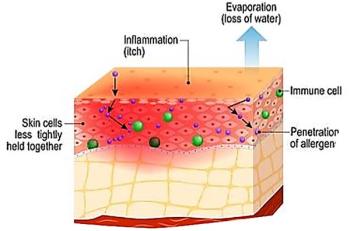
Chronic Cough and Phlegm Nearly Double COPD Risk
PAVIA, Italy, Jan. 2 -- Chronic cough and phlegm in a young adult nearly double the risk of developing chronic obstructive pulmonary disease (COPD), researchers here said.
PAVIA, Italy, Jan. 2 -- Chronic cough and phlegm in a young adult nearly double the risk of developing chronic obstructive pulmonary disease (COPD), researchers here said.
On the other hand, chronic wheezing and shortness of breath do not appear to be linked to an increased risk of COPD, according to Isa Cerveri, M.D., of San Matteo Hospital and the University of Pavia.
The findings come from a study of 5,002 volunteers, age 20 to 44, who were monitored for a median of 8.9 years, Dr. Cerveri and colleagues reported in the January issue of the American Journal of Respiratory and Critical Care Medicine.
All volunteers had normal lung function at the beginning of the study, where normal function was defined as having the ratio of one-second forced expiratory volume (FEV1) to forced vital capacity (FVC) of at least 70%.
During follow-up, 123 incident cases were reported, defined as a FEV1/FVC ratio less than 70% at the end of follow-up, but without a diagnosis of asthma.
Overall, the incidence of COPD was 2.8 cases per 1,000 volunteers per year, the researchers said, resulting in a cumulative incidence of 2.8%.
However, the researchers said:
- Chronic cough and phlegm at baseline was an independent and statistically significant predictor of COPD. After adjusting for smoking habits and other potential confounders, the incidence rate ratio was 1.85, with a 95% confidence interval from 1.17 to 2.93.
- Chronic wheezing and shortness of breath was not associated with the disease. The incidence rate ratio was 0.98, with a 95% confidence interval from 0.64 to 1.50.
Some participants had chronic cough and phlegm at baseline but not at the end of follow-up, while others acquired the condition during the study, the researchers said.
However, those who had chronic cough and phlegm both at baseline and at the end of follow-up had a nearly threefold-increased risk of developing COPD compared with asymptomatic participants. The incidence rate ratio was 2.88, with a 95% confidence interval from 1.44 to 5.79.
"The presence of chronic cough and phlegm is not an innocent symptom, but is an early marker of airflow obstruction," Dr. Cerveri said in a statement.
But the risk of COPD for those who smoked heavily - at least 15 pack-years at baseline - was even higher, the researcher found, with an adjusted incidence rate ratio of 3.76 and a 95% confidence interval from 2.76 to 5.12.
From a public health perspective, the authors said, the prevention of smoking and smoking cessation are the most effective strategies to reduce the burden COPD.
The relatively high rate of COPD is this young population is "hardly surprising," commented Jrgen Vestbo, M.D., of Hvidovre University Hospital in Hvidovre, Denmark.
Writing in an accompanying editorial, Dr. Vestbo said, "COPD does not suddenly appear out of nowhere." For there to be high rates among older people, "significant incidence rates in young adulthood are needed," he added.
On the other hand, he said, "the predictive value of chronic cough and phlegm is probably more surprising," especially because the population in the study was young and had normal lung function at baseline.
It remains to be seen, he said, whether, the increased mucus secretion is an effect or a cause of COPD. Dr. Vestbo said researchers need to understand the mechanism behind the reported association.
He also pointed out that for the findings reported by Dr. Cerveri and colleagues in young adults "to change our current understanding, we need to ensure that these associations cannot be explained by other mechanisms. In young adults, the most obvious bias would seem to be misclassification of asthma as COPD."
Newsletter
Enhance your clinical practice with the Patient Care newsletter, offering the latest evidence-based guidelines, diagnostic insights, and treatment strategies for primary care physicians.
































































































































































































































































































































